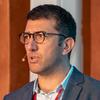Explore all the information on
Salmonella in poultry
Poultry can become infected with many different types of salmonella; about 10 percent of all Salmonella spp. have been detected in poultry. The most important are Salmonella Typhimurium and Salmonella Enteritidis. Other serotypes frequently occurring in poultry worldwide are, for example, Salmonella Hadar, Salmonella Livingstone, and Salmonella Senftenberg. In most cases, the birds are not sick and the production is not affected. The degree of illness depends on factors of both the bacteria and the host. The bacterium’s serotype and phage type is of significance but also the type of animal, age and general health status. S.Typhimurium and S. Enteritidis may induce clinical symptoms in poultry. It is mainly in very young chickens aged up to two weeks that salmonella can cause disease and death. The symptoms may vary and include weakness, loss of appetite and poor growth. The animals are crowded close to heat sources and sit with drooping wings and their eyes closed.
Thierry Vendrell, International Sales Director at Calier, shares expert insights on effective strategies to safeguard poultry against Salmonella....
Comments : 0
Recommendations: 0
I. INTRODUCTION Poultry feed is routinely pelleted for many reasons such as increased feed intake, feed efficiency, and feed hygiene (Abdollahi et al., 2013). However, pelleting is not without its drawbacks, particularly when using higher pelleting temperatures (Abdollahi et al., 2010). The industry has been trending towards ever higher conditioning temperatures due, at least in part, to efforts to improve feed hygiene and thus decrease reliance on in-feed antibiotics for prevention...
Comments : 0
Recommendations: 0
INTRODUCTION Foodborne infections caused by Salmonella enterica are of primary importance worldwide. The WHO estimates that Salmonella causes more than 153 million illnesses, 120,281 deaths, and 8.27 million disability-adjusted life years annually (1). As foodstuffs can be contaminated in several parts of the food chain, a “from farm to table” approach is necessary to understand the epidemiology of Salmonella. Although Salmonella can contaminate vegetables, food-producing...
Comments : 0
Recommendations: 0
Poultry industry experts at the 2025 Latin American Poultry Summit will present information on factors that affect the efficient marketing of poultry farming. The program is organized into five sessions – grain management, food safety, genetics, breeding and health – and will take place on Monday,...
Comments : 0
Recommendations: 0
1. Introduction S. Infantis currently ranks among the top 10 serovars associated with human infections, standing as the fourth leading cause of salmonellosis cases in the EU [1]. Recent data from the European Food Safety Authority (EFSA) indicated that 95.6% of the Salmonella isolates in broiler flocks belong to the Infantis serovar, demonstrating a close association with poultry production [2]. In recent years, the increasing incidence of S. Infantis infections in both humans...
Comments : 0
Recommendations: 0
INTRODUCTION Non-typhoidal Salmonella (NTS) enterica subsp. enterica is a foodborne pathogen that causes »1.2 million infections in the United States of America (USA) annually (Scallan et al., 2011), and was responsible for more than 95 million cases of diarrheal disease and 50,771 deaths worldwide in 2017 (Stanaway et al., 2019). Human infections are usually mild and manifest as a self-limiting gastroenteritis. However, high-risk populations such as the infants, the elderly,...
Comments : 0
Recommendations: 0
Nontyphoidal Salmonella (NTS) represents one of the leading causes of foodborne gastroenteritis worldwide (1, 2). The global burden of NTS infections is 93.8 million cases, and it is estimated that NTS causes around 155,000 deaths annually (3). Unfortunately, there is a lack of information about surveillance studies of NTS in Latin American countries, and reports on NTS outbreaks are scarce in this region (4). In South American countries, there has been an increase in reports of...
Comments : 0
Recommendations: 0
I. INTRODUCTION Mycotoxins are secondary metabolites produced by fungi (fusarium, aspergillus, penicillium mainly) that can cause serious health problems in poultry and may result in severe economic losses. They can exert negative impact on both performance (Kolawole et al, 2020) and intestinal health (Antonissen et al, 2014) depending on the type of mycotoxin, extent of exposure, its concentration, the age of the animals and their health status. Mycotoxins can also be a predisposing...
Comments : 0
Recommendations: 1
Introduction The genus Salmonella is considered a leading cause of foodborne illnesses around the world (WHO, 2017). These bacteria are among the most significant agents of food and water poisoning in the United States and Europe (Bäumler et al., 2000; Callejón et al., 2015; Varma et al., 2005). Globally, it is estimated that 93.8 million cases of Salmonella-related gastroenteritis occur annually, resulting in 155,000 deaths (Majowicz et al., 2010). In Ecuador, typhoid,...
Comments : 0
Recommendations: 0
I. INTRODUCTION Continuous interest in new probiotics to alleviate intestinal health problems is emerging, especially since antibiotics become more restricted in use. Various Bacillus spp. are known to improve broiler performance and health due to their ability to produce antimicrobial substances, modulate the immune system, change the intestinal microbiota or increase nutrient digestion and utilization (Lee et al., 2010; Caulier et al., 2019; Giurescu et al., 2020; Jha et al., 2020;...
Comments : 0
Recommendations: 0


Will New Version of GMP Boost the Veterinary Drugs Industry?
Suggested link
I. INTRODUCTION To successfully develop a challenge model to simulate actual infection as seen in production practices, a seeder challenge model was proposed and previously shown to be an effective method to infect poultry (Cox et al., 1996, 2020). However, applying it in this way to young layers is novel. This pilot study was developed with the objective of determining the success of this challenge method. A second objective was to determine the base line effectiveness of the...
Comments : 0
Recommendations: 0
Wevap, the new Calier tool, audits the vaccination process (LE). Auditing the vaccination process—from biosecurity measures and sample collection to vaccine preparation and application—is crucial for achieving the desired outcomes...
Comments : 0
Recommendations: 0
1. Introduction Salmonella enterica is one of the main causes of foodborne disease, representing a worldwide problem for public health systems [1]. This species consists of more than 2600 serovars described to date [2,3]. S. enterica serovars can cause infections in humans ranging from gastroenteritis, associated with non-typhoidal Salmonella (NTS), to typhoid fever [4]. NTS are estimated to cause more than 93.8 million infections and 155,000 deaths per year globally [5,6]. The main...
Comments : 0
Recommendations: 0
1. Introduction Non-typhoidal Salmonella (NTS) comprises multiple serovars of Salmonella enterica that can cause self-limiting or invasive enteric disease and are transmitted to humans mainly through contaminated food [1,2]. The consumption of poultry products represents a common route of NTS transmission to humans [3], and the increasing prevalence of antimicrobial resistance (AMR) among NTS isolates has become a serious concern [4,5]. Most gastrointestinal infections...
Comments : 0
Recommendations: 0
Auditing the vaccination process from the biosecurity measures that go through the taking of samples or the preparation and application of the vaccine, is key to obtaining the expected results.Wevap the new Calier tool to audit the vaccination process (LE)
...
Comments : 0
Recommendations: 1
Introduction Food safety is a central concern in the poultry industry, with pathogens such as Salmonella causing outbreaks associated with meat and eggs [1]. Nearly 1 in 25 packages of chicken products at the average grocery store are contaminated with Salmonella, and Salmonella causes 1.35 million cases of infection every year in the United States (US) [1]. A multi-state Salmonella Enteritidis outbreak in 2021 connected to not ready-to-eat (RTE) products has refocused producer...
Comments : 0
Recommendations: 1
Spring has come to stay for a few months, everything is getting greener, and the environment is recovering from the harsh cold, but as optimistic as we are, we find spring to be a great moment for raising awareness of poultry’s most common diseases. Want to know some of them? 1. Coccidiosis Represented in poultry...
Comments : 0
Recommendations: 2
I. INTRODUCTION Salmonellosis remains one of the most frequent food-borne zoonoses, constituting a worldwide major public health concern. Although Salmonella can be acquired from a range of foods, poultry meat and eggs remain prominent (Antunes et al., 2016). Human salmonellosis cases in the US are estimated at 1.35 million per year (Centers for Disease Control, 2019a). Likewise, cases in the UK and EU have not changed significantly over the past decade. Success in controlling...
Comments : 1
Recommendations: 0
Introduction Non-typhoidal Salmonella (NTS), one of the principal causes of limiting diarrheal diseases in humans due to the presence of a myriad of virulence determinants, is responsible for approximately 155,000 deaths annually (Pan et al., 2009; Majowicz et al., 2010; Eguale et al., 2015; Balasubramanian et al., 2019; Nale et al., 2021). It is estimated that 93.8 million cases of gastroenteritis caused by Salmonella infection occur worldwide each year...
Comments : 0
Recommendations: 0
INTRODUCTION Salmonella spp. is the second most prevalent zoonotic pathogen in the European Union, and strictly related to poultry production, responsible for 60,050 human gastrointestinal infections during 2021 . In terms of the most significant serovars, Salmonella Enteritidis and Salmonella Typhimurium accounted for approximately 54.6% and 11.4% of the reported cases, respectively. However, salmonelosis can be...
Comments : 0
Recommendations: 0




.jpg&w=3840&q=75)


.jpg&w=3840&q=75)







.jpg&w=3840&q=75)


















